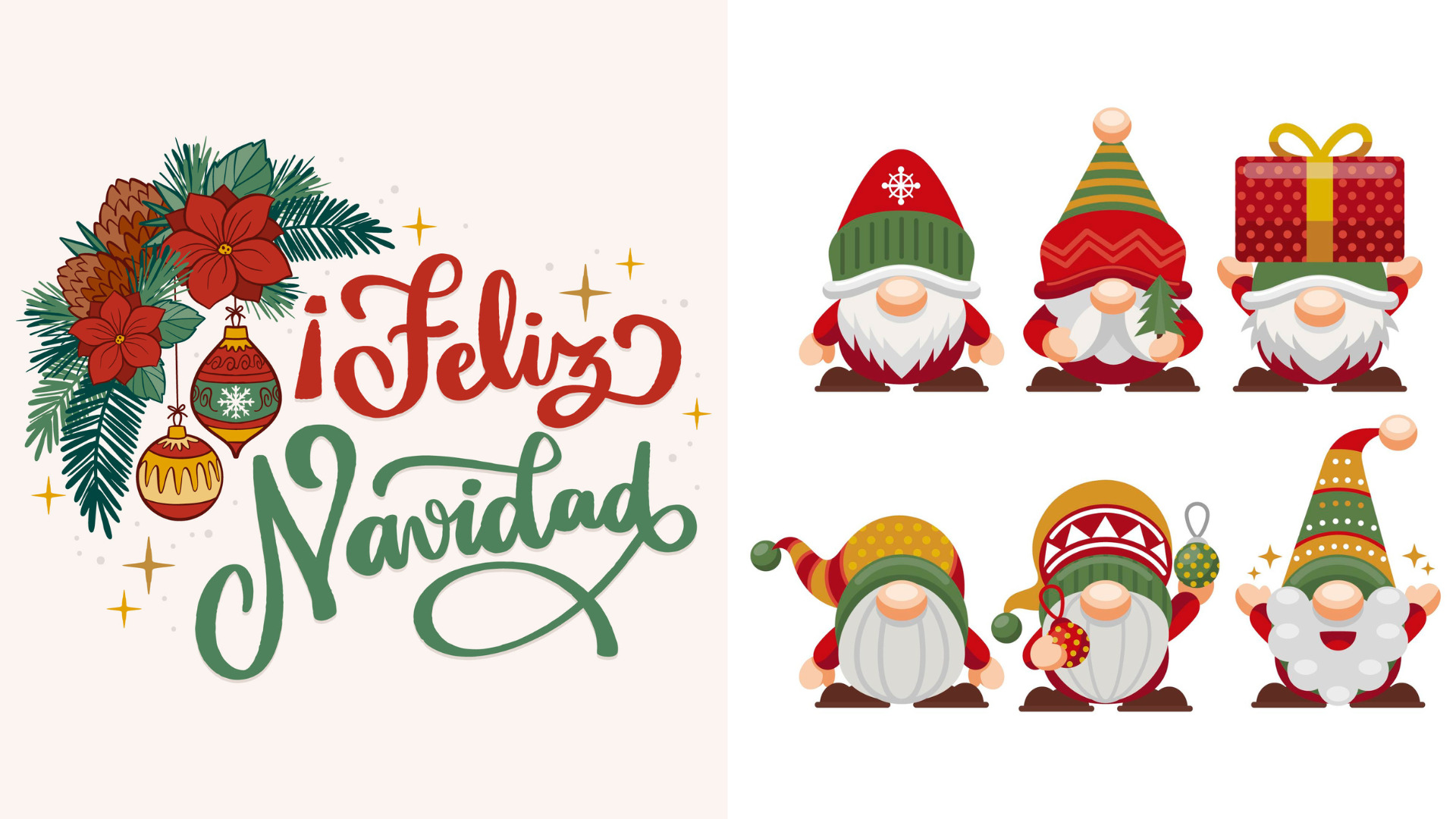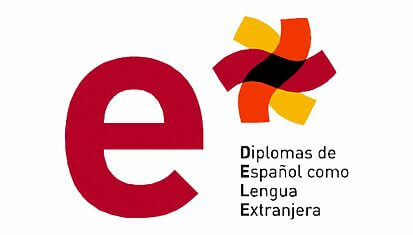Christmas and Christmas Eve are just around the corner, and in Spain, the celebration fills with joy and happiness. Christmas wouldn’t be the same without gifts, and we want to gift you this article where we’ll talk about the charm that surrounds these festivities in Spain and around the world.
In Spain, we say “¡Feliz Navidad!” to wish a joyful season overall. However, Christmas Eve, which is on December 24th, is like the prelude to the big event because it’s the night before Christmas when families gather to enjoy a spectacular dinner and share heartfelt moments.
And how should we write, “Nochebuena” or “Noche Buena”? Well, although the RAE (Royal Spanish Academy) accepts both forms, it’s most common to write it as one word with an initial capital letter since it’s a proper name of a celebration, without a space! In the case of “Navidades,” when referring to a time of year, writing it in lowercase is also accepted: “Around 2.4 million passengers will pass through the Canary Island airports this Christmas.”
What’s the origin?
Christmas in Spain has its roots in Catholic tradition, but over the years, unique and festive elements have been added. Christmas, as we know it, is a mix of traditions from various cultures. Also, decorating streets and squares with dazzling lights is a custom dating back to the 1960s.
From illuminating the streets to Christmas markets, everything combines to create a magical atmosphere found only at this time of the year.

When is it celebrated in Spain?
The magic begins on December 25th and extends until Three Kings’ Day, on January 6th. During these dates, you’ll hear many Spaniards saying, “¡Feliz Navidad y próspero año nuevo!” And if someone says, “¡Felices fiestas!” it’s also valid.
The tradition of Papá Noel has gained popularity in the last few decades, especially due to the influence of Christmas customs from other countries. He is depicted as a friendly and good-hearted character, dressed in a red and white suit, with a thick white beard.
Although for Spaniards, the more ingrained figure is that of the Three Wise Men, who bring gifts to children on January 6th, the presence of Papá Noel has been integrated into the celebration of Christmas. In many families, especially those with young children, Papá Noel visits homes on the night of December 24th to leave gifts under the Christmas tree.
The story of Papá Noel has its roots in Saint Nicholas, a bishop who lived in the 4th century in what is now Turkey. Saint Nicholas was known for his generosity and love for children. Over time, the figure of Saint Nicholas evolved in different cultures, giving rise to the modern figure of Santa Claus or Papá Noél.
What are the villancicos?
Villancicos are Christmas songs that make us feel the festive spirit. In the streets, at homes, everywhere! Each country has its own traditional Christmas songs.
Their origin lies in a form of poetry mainly cultivated in Castile, similar to the ‘zéjel’. However, before being called villancicos, they were named other things like “villancejos” or “villancetes.”
In Spain, we have some classics like “Noche de paz” “Campana sobre campana” “La Marimorena,” “Los peces en el río” among others. These are the songs that make us want to dance and sing and are an essential part of Christmas. So get ready to hum these songs during these holidays! And if you don’t know any, come to our Institute, and we’ll teach you to sing some, although we don’t perform miracles.

And how do they celebrate Christmas in other places?
Now, let’s step out of our land and tell you how Christmas is celebrated in other corners of the planet.
In Mexico, the Christmas celebration is full of traditions. The posadas, representing the search for shelter by Mary and Joseph, are community events that involve songs, piñatas, and delicious tamales. The festivity culminates with the celebration of Christmas Eve, where families gather for a lengthy dinner.
In Argentina, Christmas Eve is celebrated with a special dinner often including roasted lamb and sweet bread. Midnight marks the moment for exchanging gifts and toasting with family. New Year’s is welcomed with fireworks and street festivities.
In Venezuela, Christmas celebrations begin on December 16th with the “Noche de los Tambores,” followed by traditional Christmas masses. The arrival of the New Year is celebrated with music, dance, and a special dinner including dishes like hallacas and ham bread.
In Puerto Rico, Christmas festivities are extensive and very cheerful. Parrandas, similar to serenades, are popular, where groups of friends visit houses singing villancicos. The celebration culminates with the arrival of the Three Kings in January.
Christmas festivities in Colombia start with “Día de las Velitas” on December 7th, where streets light up with lanterns and candles. The Nine Days of Aguinaldos, nine days of prayers and songs, is a rooted tradition bringing families and friends together.
The Christmas celebration of Filipinos starts early, often in September, and streets are adorned with colorful star-shaped lanterns.
In Russia, Christmas is celebrated on January 7th due to the Orthodox calendar. The star dish is “kutia,” a type of wheat pudding. But Russian Santa Claus, Ded Moroz, arrives with gifts on December 31st!
The British adore their traditional Christmas dinner with turkey, accompanied by Christmas pudding and crackers. Christmas Crackers are an essential part of Christmas celebrations in the UK. They are small decorative cylinders containing gifts, jokes, and a little “popper.” They are placed on the table during Christmas dinner, and the tradition is for two people to pull each end to open it.
Meanwhile, in Scotland, the arrival of the New Year, known as Hogmanay, is celebrated enthusiastically through community events and spectacular fireworks.
In France, Christmas Eve dinner is a culinary masterpiece. Foie gras, oysters, and the classic “bûche de Noël” are essential.
Italians love food, and Christmas is no exception. The famous panettone and the seven fish dish are traditional.
In Morocco, Christmas is a multicultural celebration. There’s a mix of Islamic and Christian influences! Families gather to enjoy couscous and tagines, and the streets are filled with lights and colors.
In another African country, Ethiopia, the celebration of Christmas, known as Ganna, includes attending masses and preparing traditional dishes like doro wat, a spicy chicken stew. The eve of Ganna is a time for family gatherings and games.
In Japan, the Christmas season means enjoying fried chicken from the fast-food chain KFC, a tradition adopted since the 1970s.
In Australia, where summer is in full swing, families gather for beach barbecues and enjoy outdoor festivities.
Sinterklaas, the Dutch equivalent of Santa Claus, brings gifts on December 5th. Additionally, the table cannot lack “kerststol” (Christmas bread) and delicious gingerbread cookies called “speculaas”.
Christmas is a festival that unites people worldwide, each with its own tradition and special flavor. So, dear students, enjoy this magical time, celebrate big, and make this Christmas unforgettable.
From the Instituto Hispánico de Murcia, we wish you all a Merry Christmas and may Santa Claus or the Three Kings leave you many gifts!



